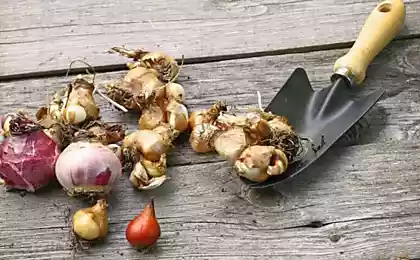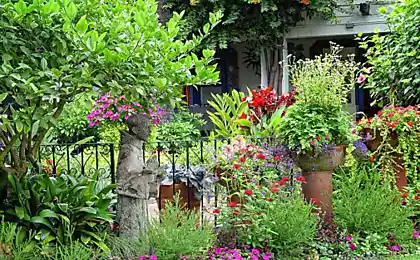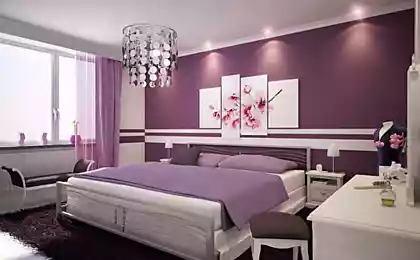192
Urgent measures if tulips do not bloom and only leaves instead of flowers
When I was little, I loved visiting my grandmother in the country in the spring. You will go out in the morning on the porch, and you are already waiting for the warm sun and the delicate aroma of flowering tulips. Grandma cherished every bud, taking care that the flower harvest pleased the eye for as long as possible. My favorite ba said that tulip - It's easy. The main thing is to know just a few rules. That's what I want to talk about today.

GettyImages Growing Tulips In order for tulips to bloom lush, they must be taken care of in advance. When the weather pleases the first spring rays of the sun, you can safely feed the flowers. There may still be snow on the ground.
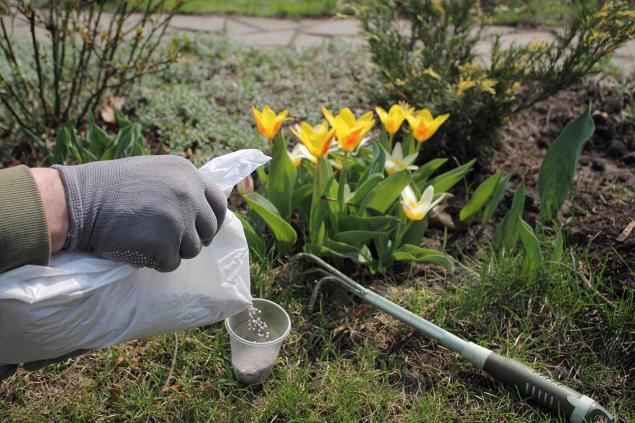
For 1 square meter of land you will need about 15-30 g of fertilizer. Use nitroammophosca or any other feeding for garden flowers. The first time fertilizer should be introduced in the snow, and the second time after the appearance of the first buds. Then spend the third time fertilizing a week after the start of flowering. Be careful during feeding, so as not to damage the leaves and roots. It is best to introduce fertilizer with watering or on a rainy day.
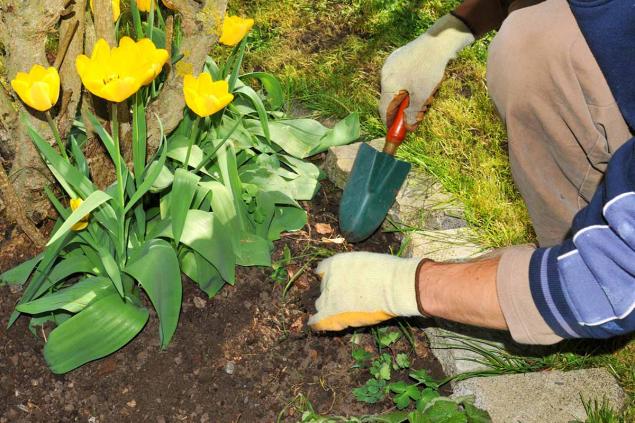
Soil should be given special attention, as it depends on whether the tulips will receive all the nutrients they need. The appearance of the plant shows exactly what it lacks.
For example, thin, hanging down leaves are a sure sign of a lack of nitrogen in the soil. This can cause the stem and leaves to turn red. If the edges of the sheets are painted in a blue-green color, then there is not enough potassium or phosphorus elements in the soil.
Taking care of tulips, it is important to monitor their condition. If you notice an infected plant, your main task is to save healthy flowers. To do this, dig out the affected plant along with the root and part of the earth. And the place where the tulip grew, treat with a potassium solution. It should be heated to 70-100 degrees. Be careful not to damage healthy flowers in the process.

GettyImages Tulips grow very fast. During the growing season, they manage to acquire not only the above-ground part, but also additional bulbs underground. For this, the plant. Need nutrients and a sufficient amount of moisture. Water the tulips regularly, especially if there is no rain for a long time. In this case, it will be enough 2 times a week.
During watering must have loosenedso that no crust forms on its surface. At the same time, you can remove all weeds that interfere with the development of the plant. When the flowering period is over, the seed box is removed first. This is necessary so that tulips can accumulate the nutrients they need.

By the way, for watering tulips it is best to use settled and warm. It is best to make small grooves between the rows and pour water into them. After the procedure, fill the grooves. Thus, water cannot quickly evaporate from the surface of the earth.
Tulip transplantation Dried tulips need dig out. For this, a well-ventilated place in the attic, where there is a shadow, is ideal. Then they can be dropped in August or September. To do this, you need to make furrows 30 cm wide and 20 cm deep. Pour granules of superphosphate to the bottom, and sprinkle them with earth from above.
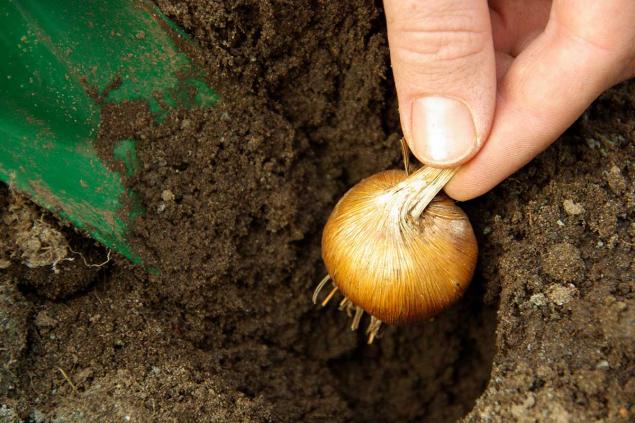
It's best first. lay down the largest bulbs. Sprinkle them with earth, and place small bulbs between them and sprinkle all the soil again. This will help not to dig out bulbs every year.
That's the order in one place. They can grow up to 3-4 years.. But only if you take good care of the plant. For example, in no case should humus be introduced into the soil during planting. More information about how to plant tulips and treat bulbs, we wrote in this article.
Tulip Growing: Protection to protect flower beds during the first frost We need to mulch them.. Straw, dry grass, humus or peat will do. The thickness of the protective coating should not be less than 10-15 cm.
Carefully monitor the condition of the plant. If it is yellowingThis is a sure sign of illness. For example, the root bulb could be attacked by a tick or other pests. With Fusariosis, a browning and drying bulb is added to the symptoms. And on the surface of the soil there is a gray coating with spores.
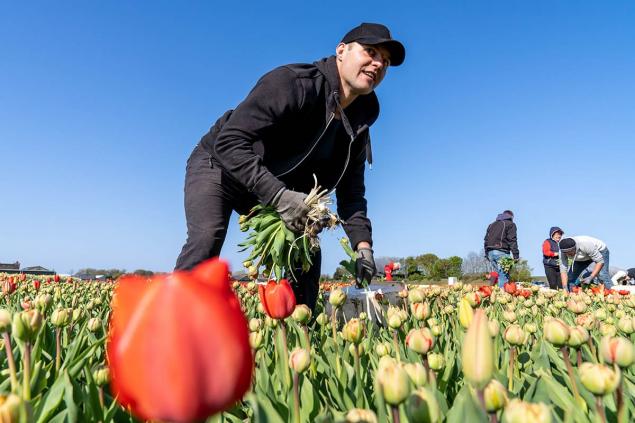
GettyImages If the bulb began to turn yellow and bluish-green fungus spores appeared on the surface, the tulips were struck by penicillous rot. It can cause the onion to rot completely.
Tulip treatment depends on the disease that has affected the plant. This is a rather extensive topic, which can be devoted to a separate article. If you are interested in this issue, let me know in the comments. And we will tell you more about it. prevention and control of diseases.
Photo in article

GettyImages Growing Tulips In order for tulips to bloom lush, they must be taken care of in advance. When the weather pleases the first spring rays of the sun, you can safely feed the flowers. There may still be snow on the ground.

For 1 square meter of land you will need about 15-30 g of fertilizer. Use nitroammophosca or any other feeding for garden flowers. The first time fertilizer should be introduced in the snow, and the second time after the appearance of the first buds. Then spend the third time fertilizing a week after the start of flowering. Be careful during feeding, so as not to damage the leaves and roots. It is best to introduce fertilizer with watering or on a rainy day.

Soil should be given special attention, as it depends on whether the tulips will receive all the nutrients they need. The appearance of the plant shows exactly what it lacks.
For example, thin, hanging down leaves are a sure sign of a lack of nitrogen in the soil. This can cause the stem and leaves to turn red. If the edges of the sheets are painted in a blue-green color, then there is not enough potassium or phosphorus elements in the soil.
Taking care of tulips, it is important to monitor their condition. If you notice an infected plant, your main task is to save healthy flowers. To do this, dig out the affected plant along with the root and part of the earth. And the place where the tulip grew, treat with a potassium solution. It should be heated to 70-100 degrees. Be careful not to damage healthy flowers in the process.

GettyImages Tulips grow very fast. During the growing season, they manage to acquire not only the above-ground part, but also additional bulbs underground. For this, the plant. Need nutrients and a sufficient amount of moisture. Water the tulips regularly, especially if there is no rain for a long time. In this case, it will be enough 2 times a week.
During watering must have loosenedso that no crust forms on its surface. At the same time, you can remove all weeds that interfere with the development of the plant. When the flowering period is over, the seed box is removed first. This is necessary so that tulips can accumulate the nutrients they need.

By the way, for watering tulips it is best to use settled and warm. It is best to make small grooves between the rows and pour water into them. After the procedure, fill the grooves. Thus, water cannot quickly evaporate from the surface of the earth.
Tulip transplantation Dried tulips need dig out. For this, a well-ventilated place in the attic, where there is a shadow, is ideal. Then they can be dropped in August or September. To do this, you need to make furrows 30 cm wide and 20 cm deep. Pour granules of superphosphate to the bottom, and sprinkle them with earth from above.

It's best first. lay down the largest bulbs. Sprinkle them with earth, and place small bulbs between them and sprinkle all the soil again. This will help not to dig out bulbs every year.
That's the order in one place. They can grow up to 3-4 years.. But only if you take good care of the plant. For example, in no case should humus be introduced into the soil during planting. More information about how to plant tulips and treat bulbs, we wrote in this article.
Tulip Growing: Protection to protect flower beds during the first frost We need to mulch them.. Straw, dry grass, humus or peat will do. The thickness of the protective coating should not be less than 10-15 cm.
Carefully monitor the condition of the plant. If it is yellowingThis is a sure sign of illness. For example, the root bulb could be attacked by a tick or other pests. With Fusariosis, a browning and drying bulb is added to the symptoms. And on the surface of the soil there is a gray coating with spores.

GettyImages If the bulb began to turn yellow and bluish-green fungus spores appeared on the surface, the tulips were struck by penicillous rot. It can cause the onion to rot completely.
Tulip treatment depends on the disease that has affected the plant. This is a rather extensive topic, which can be devoted to a separate article. If you are interested in this issue, let me know in the comments. And we will tell you more about it. prevention and control of diseases.
Photo in article
Why men are animated by discussing Nicolas Cage's new wife
What did the mother of a girl who was bullied by a classmate






